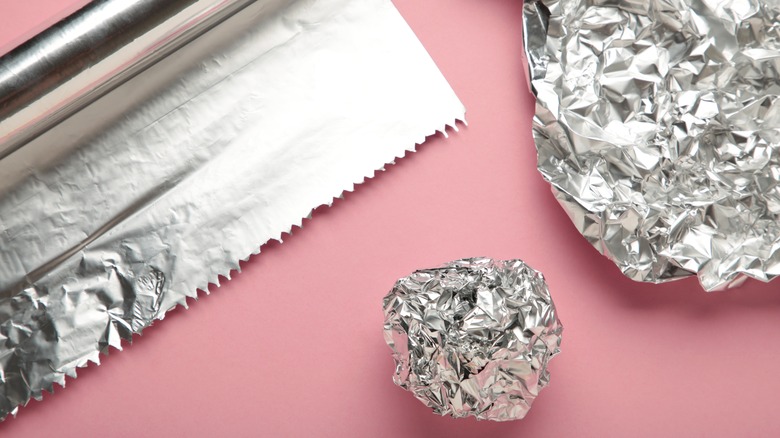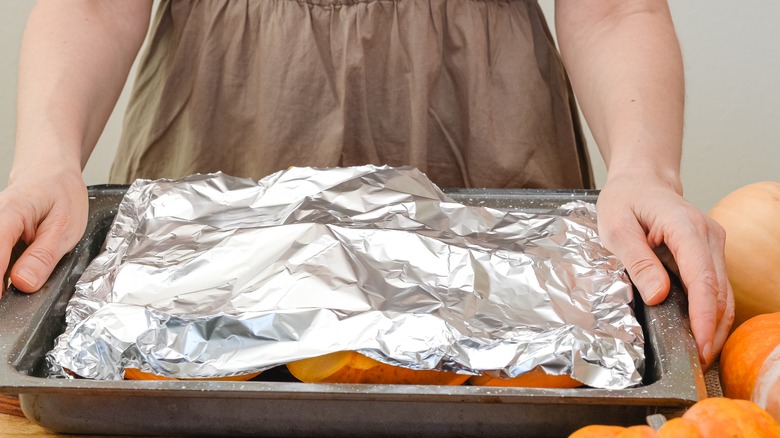The Reason Aluminum Foil Has Both A Shiny And Dull Side
Aluminum foil might unknowingly be one of the best kitchen tools ever. Besides being great for keeping stored food fresh, it's also the perfect way to prevent messes in the oven and can get your grill grate shiny and clean. But if you've ever torn a piece of tin foil only to question which side was the correct side to use, you're not alone. Between the shiny and the dull, though, it turns out that there is no real difference.
You might keep the shiny side up because it looks better, but there is no right answer here. The process for creating aluminum foil in the factory is pretty interesting and the whole explanation behind the shiny versus dull side comes from the process of creating the foil in the first place. So next time you're questioning right from wrong when placing some foil over your baking sheet, just remember that there's no need to stress.
How aluminum foil gets a shiny and dull side
One of the most well-known aluminum foil brands, Reynolds, actually explains the reason for the two sides and reveals that the dull side only looks like that because it comes in contact with another sheet of foil while it's made. It happens when the aluminum foil gets milled. "Milling is a process whereby heat and tension is applied to stretch the foil to the desired thickness," the company says.
Reynolds also adds that two pieces of foil are milled at a time and when the sides come in contact with each other during the process, they become dull. This explains why one side is shiny and one side isn't. But the brand stresses that it makes no difference in terms of product quality, stating, "It's perfectly fine to place your food on either side, so you can decide if you prefer to have the shiny or dull side facing out."
Is aluminum foil actually made from aluminum?
Unlike the copper penny, aluminum foil's makeup has not changed over the years. Today, it is still made primarily with aluminum. The USDA reports that aluminum foil is made from "98.5% aluminum, with the balance primarily from iron and silicon to give strength and puncture resistance."
Aluminum is a conductor, which helps it trap heat. When you wrap your food in foil it keeps that heat in, meaning your food stays warm for longer. Interestingly, the foil doesn't usually get hot, meaning you can remove it from the oven without burning your hands. It's great on the stove as a substitute for a pot lid or in the oven as an easy way to keep foods from drying out. Just remember that aluminum is a metal, so you should use extreme caution when putting it in the microwave or it could catch fire.


